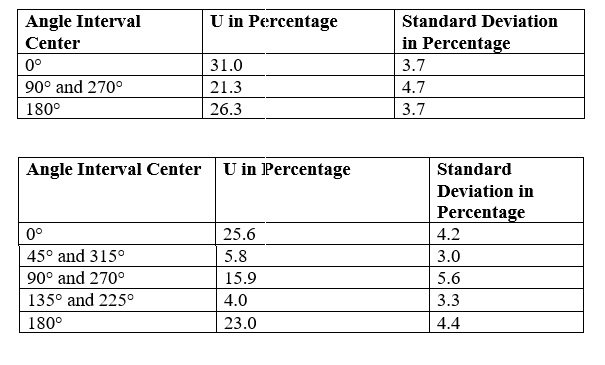barrier requirements

Can we please get your advice on this one question?
Home > Radiation
Protection and Quality Assurance > Radiation Protection > Facilities and
Area Monitoring > Barrier Requirements
NCRP REGULATIONS ON BARRIER REQUIREMENTS:
Protective barriers are to ensure that the dose equivalent received by any individual does not exceed the applicable maximum permissible value. The areas surrounding the room are designated as controlled or non-controlled, depending on whether or not the exposure of persons in the area is under supervision of a radiation protection supervisor.
Controlled areas
Controlled areas are areas with limited access. They are immediate areas to where radiation is used, example; treatment rooms and control booths. Access, occupancy and working conditions in these are controlled for radiation protection purposes.
Workers in these areas are those specifically trained in the use of ionizing radiation and their radiation exposures are individually monitored. Maximum permissible dose equivalent is assumed to be 0.1mSv/week or 5mSv/year.
Uncontrolled areas
These are other areas in the hospital and the surrounding environment. Maximum permissible dose equivalent is 0.02 mSv/ week or 1 mSv/ year.
Protection is offered against the following types of radiation:
- Primary radiation
- Scattered radiation
- Leakage radiation
The following factors are applied in the calculation of barrier thickness:
a) Workload
Workload refers to the average absorbed dose of radiation produced by a source over specified time (mostly one week) at a specific location.
450 Gy/ week absorbed dose and 30
patients treated per day are the default recommendations in NCRP 151 for a busy
facility.
450 Gy/week = 5 treatments/week/patient × 3 Gy/treatment × 30 patients.
It is simpler and with more conservative calculations when full 450 Gy/week workload is at the higher energy in dual energy linear accelerators. It is appropriate for new construction.
Dual-energy calculation may be appropriate for an existing construction. If modifications to the existing vault are difficult and size constrained, 30 patient workload can be splitted to ensure at least 250Gy/week at higher MV with 17 patients getting 255Gy/week as illustrated in the table below:

b) Use factor (U)
Use factor is the fraction of the workload for which the primary beam is directed at the barrier in question. It applies to primary barrier calculations and not secondary.
· U=0.25 for lateral barriers, ceilings and floor.
· U= 0.1for tapered portions of ceiling barrier.
· U=1 has been eliminated by NCRP
NCRP 151 Recommendations Use Factor on 90° and 45° gantry angle intervals respectively

c) Occupancy factor
Occupancy factor is the fraction of time a particular location may be occupied.
NCRP Recommended Occupancy
T = 1: Areas occupied full-time by an individual, example; receptionist areas, attended waiting rooms, nurse stations, clerical offices, film reading areas, treatment planning areas.
T= 0.5: Rooms used for patient examinations and treatments.
T= 0.2: Corridors, Employee lounges, Staff rest room.
T= 0.125: Corridor doors/ Treatment vault doors.
T= 0.05: Public toilets, unattended vending areas, Storage rooms, unattended waiting rooms.
T= 0.025: Minimal occupancy areas, example; unattended parking lots, unattended elevators, stairways, attics, janitor’s closets.
d) Distance
Distance should be in meters from the radiation source to the area to be protected. Minimum distance to the occupied area is 0.3metres.
Primary barriers
A primary barrier is any surface that the linac beam can possibly interact with. Examples of primary barriers; ceiling, floor vault walls and any possible surface that any gantry angle at maximum field exposes linac beam. The width of the primary barrier should be:
Ø 1 foot (0.3 meters) either sides of the primary beam.
w =0.4
Ø Fixed primary collimator diameter (0.5m)
w = 0.5d + 0.6
Ø Greater
width at the top of the wall
w = 0.5d’ + 0.6
Secondary Barriers
Secondary barrier is any surface in the vault that is perpendicular to any primary beam surface and any other subsequent scatter surface in the vault. A secondary barrier is also the vault surface area minus primary surfaces. They can be made of lead, concrete or concrete blocks, glass or steel. Secondary barriers can be installed in the following areas:
- On walls and all doors leading into radiation treatment rooms.
- Floors and ceilings of radiation treatment room
- Viewing windows.
The leakage radiation should not exceed 0.5% of the primary beam as recommended in NCRP 151. The scattered radiation from the patient or phantom is usually less than 0.1% of the incident radiation.
REFERENCES
1. Basic Principles of Radiation Therapy Shielding Design by Peter J. Biggs PhD.
2. Overview and Basis of Design Methods for NCRP Report 151 by Raymond K. Wu, PhD.
3. Shielding Design Methods for Radiation Oncology Departments by Melissa C. Martin.
Home > Radiation Protection and Quality Assurance > Radiation Protection > Facilities and Area Monitoring > Barrier Requirements
FREE Infographic What successful people believe. What successful people do
Dictionary of Cancer Terms
Need help understanding a word? Here is an electronic resource that gives meaning to Cancer terms and their usage.

StrengthsFinder 2.0